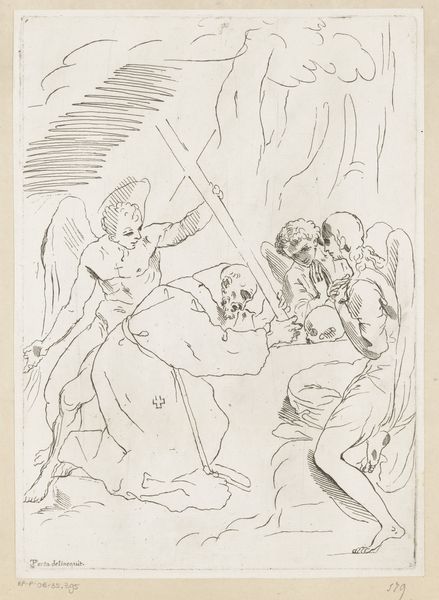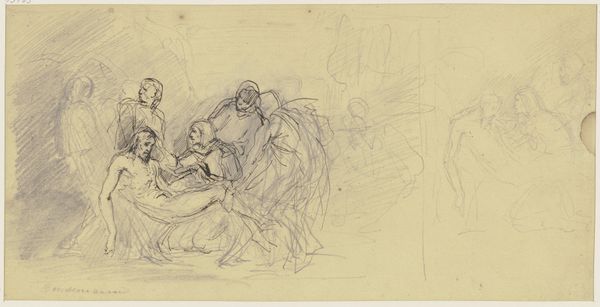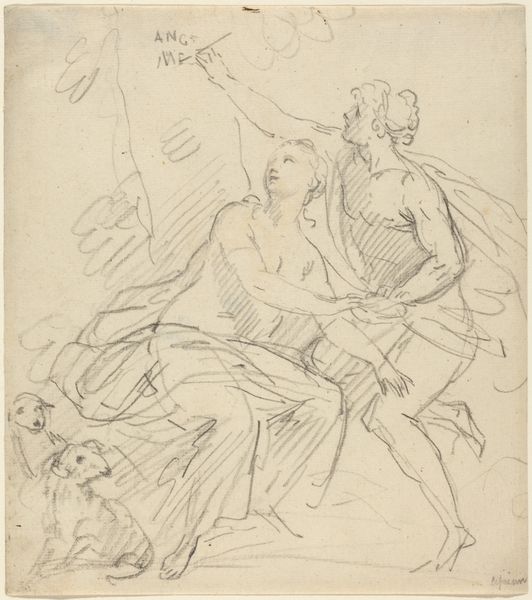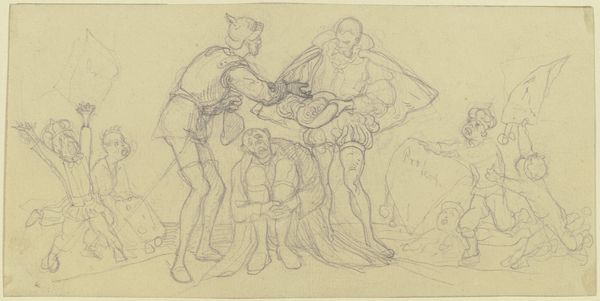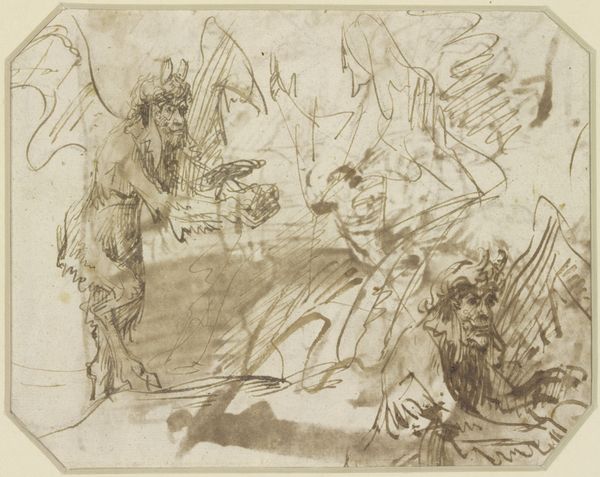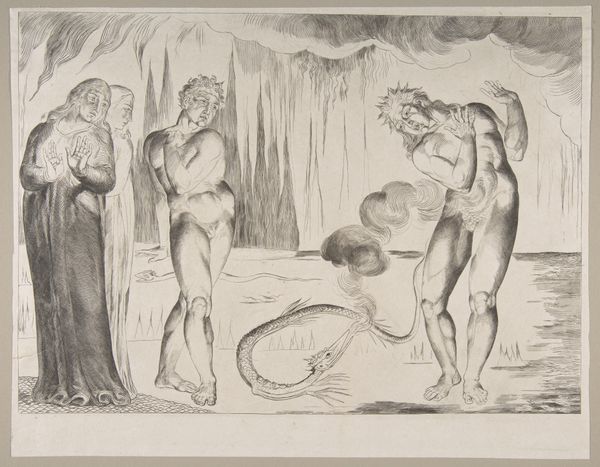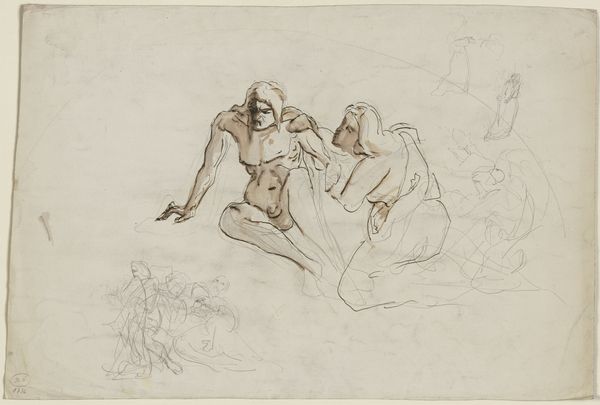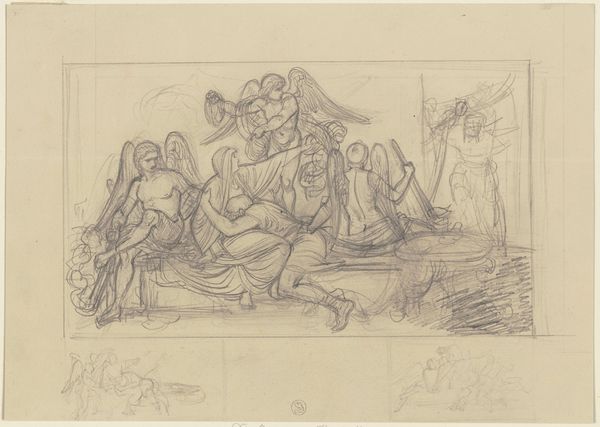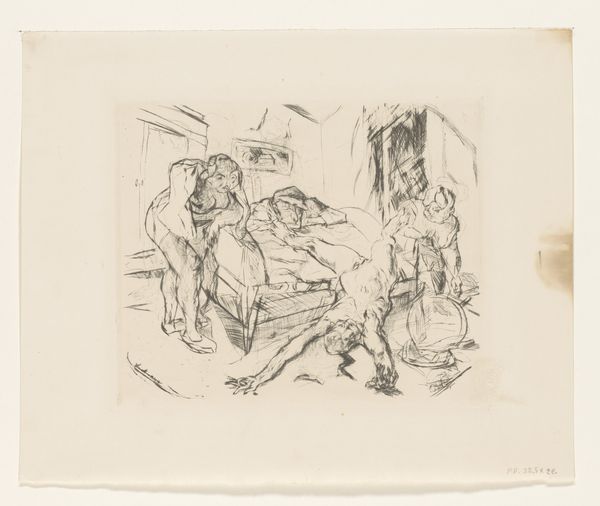
drawing, ink, engraving
#
drawing
#
narrative-art
#
baroque
#
figuration
#
ink
#
history-painting
#
engraving
Dimensions: height 184 mm, width 281 mm
Copyright: Rijks Museum: Open Domain
Curator: I find myself drawn to this delicate rendering, thought to have been produced between 1650 and 1750, presenting the scene of Midas receiving food. It appears to be an engraving. What are your initial thoughts? Editor: The scene feels stark. The lack of color intensifies the narrative’s sense of desperation, despite the implied wealth. Curator: Exactly. This engraving captures a pivotal moment from the tale of King Midas. Remember the Phrygian king of Greek mythology, whose touch turned everything to gold? It illustrates Midas’s horrifying realization as even his food becomes inedible. The servants, one presenting a tray and one looking on, cannot alleviate the curse. Editor: It certainly resonates today. The figure of Midas seems trapped, burdened by his own desire, a cautionary tale about the pitfalls of greed under late-stage capitalism and infinite growth. The seemingly infinite line stretches in a visual expression of endless accumulation. I'm wondering, is Midas seated atop a heap of treasures, perhaps even bodies? Curator: An interesting proposition. To me it almost appears as a divine cloud that elevates the king. The artist makes a connection between mythical stories and the tradition of visual storytelling, imbuing the figures with a moral compass, reflecting the ephemeral nature of earthly power. I do appreciate how the baroque style makes a complex symbol palatable to viewers throughout the years. Editor: True. These age-old power structures perpetuate injustice across history and persist in our contemporary society. But I have a question. What do those heraldic lions signify that form part of his gilded prison? The engraver makes specific stylistic decisions; can we trace the iconographic significance of how they visually relate to wealth? Curator: A valuable inquiry! I think the inclusion of lions could represent the dangers of unchecked power but also perhaps royal sovereignty and pride. Remember that through this rendering of the well-known myth, Midas serves as a cultural metaphor for hubris and the consequences of unchecked ambition. These narratives shape cultural memory. Editor: In conclusion, I feel the engraving acts as a call for self-reflection in today's context of societal wealth disparity, inviting dialogue and scrutiny regarding wealth acquisition. Curator: Indeed, the tale continues to encourage us to reevaluate the genuine worth of material possessions. The image resonates across centuries!
Comments
No comments
Be the first to comment and join the conversation on the ultimate creative platform.
